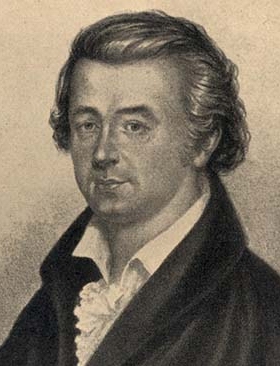The history of botanical research in the Nagykőrös area
The steppe oak woods near Nagykőrös have aroused the interest of botanists from the beginning of the 19th century when Hungarian science was born. Thanks to their persistence, we know the flora of this valuable area very well. On the basis of the collected data ‘Nagykőrösi pusztai tölgyesek’ pSCI has gained European protection as part of the Natura 2000 network.
 It was Pal Kitaibel also known as the “Hungarian Linné”, the greatest figure in the history of Hungarian botany who first published data on the local vegetation of the Nagykőrös area. Kitaibel wrote a travel journal in which he mentioned leafy spurge (Euphorbia virgata) as part of the flora of the Nagykőrös pastures, and Siberian melic grass (Melica altissima), Humulus and hawthorn as those of the vineyards in the area. It was Pal Kitaibel also known as the “Hungarian Linné”, the greatest figure in the history of Hungarian botany who first published data on the local vegetation of the Nagykőrös area. Kitaibel wrote a travel journal in which he mentioned leafy spurge (Euphorbia virgata) as part of the flora of the Nagykőrös pastures, and Siberian melic grass (Melica altissima), Humulus and hawthorn as those of the vineyards in the area.
The first detailed description of the vegetation of the Nagykőrös area was written by Ágost Kanitz. The academician, who was the first to teach natural history in Hungarian studied in Nagykőrös and Temesvár. Following his secondary school studies he did research into the steppe flora near Nagykőrös at the age of 19. Besides him, Viennese professor of botany Anton Kerner also showed special interest in the Great Hungarian Plain
The first to describe the vegetation of the area in Hungarian was László Hollós in 1896. The secondary school teacher from Kecskemét observed about 730 plant species in the Nagykőrös woods. One-third of these had not been noted before in the area. Between the two world wars Ádám Boros wrote about the adverse situation in his article “The flora of the Nagykőrös sand steppe woods.”
He recorded habitat data of rare and endangered plant species accurately, and concerning the threatening factors of the native forests of the Great Plain he wrote the following: “the woods are losing their naturalness because of black locust regrowth”.
Similarly to Ágost Kanitz, Zoltán Hargitai was “infected” with a love of botany also at the famous Arany János Secondary School. Not even his university studies did separate him from Nagykőrös, and later he went back to the woods regularly as a young teacher. His observations concentrated mainly on the Nagyerdő and Strázsa hill areas. He added almost 130 new species to the list of plant species of the area, and he described the plant communities and the microclimates also. The result of his 40 research trips incorporated into his PhD thesis is regarded as a pioneer in Hungarian ecological research. Unfortunately, his thoughts are still of great importance: “…Homeland means landscape, to the grasses, flowers, trees of which we are attached. The most sacred patriotic feeling include a significant element of homeland, and leads to the natural world, through which we wade while struggling for the daily bread so nothing remains of its original appearance.” (Hargitai, 1940)
Research during the 1980s and 1990s concentrated mainly on saving the remaining habitats. As a result, the present LIFE-Nature project was launched in 2006, which included recording of the vegetation baseline by András Kun and Szilvia Rév. Their research will monitor the effects of the conservation activities.
|